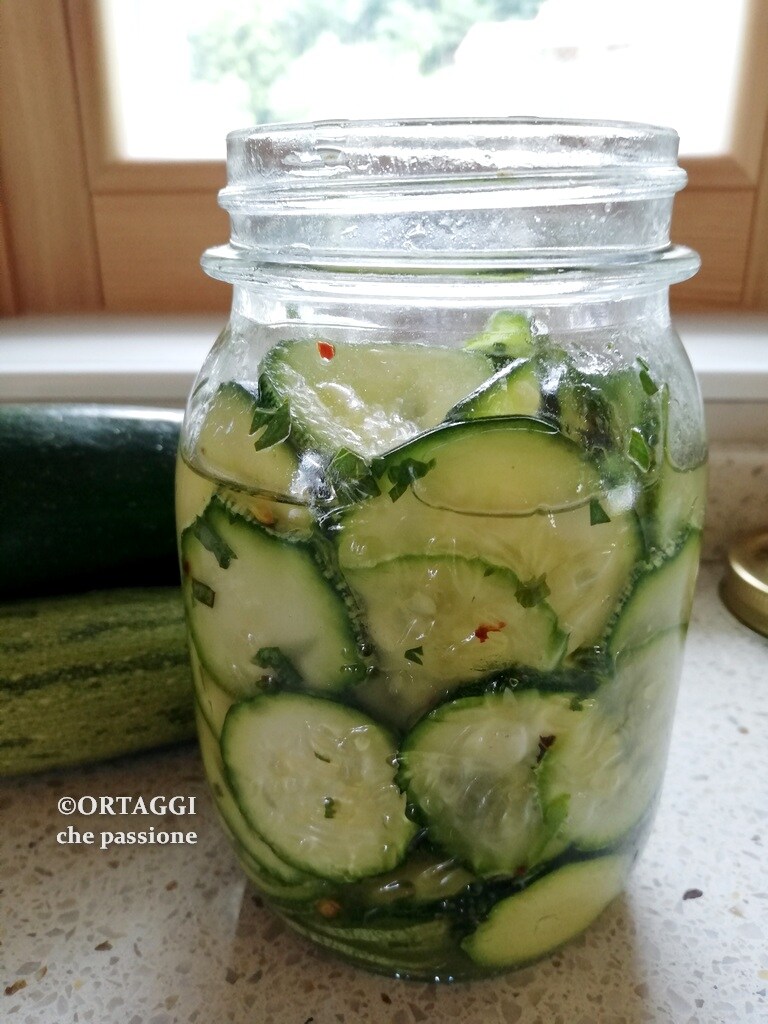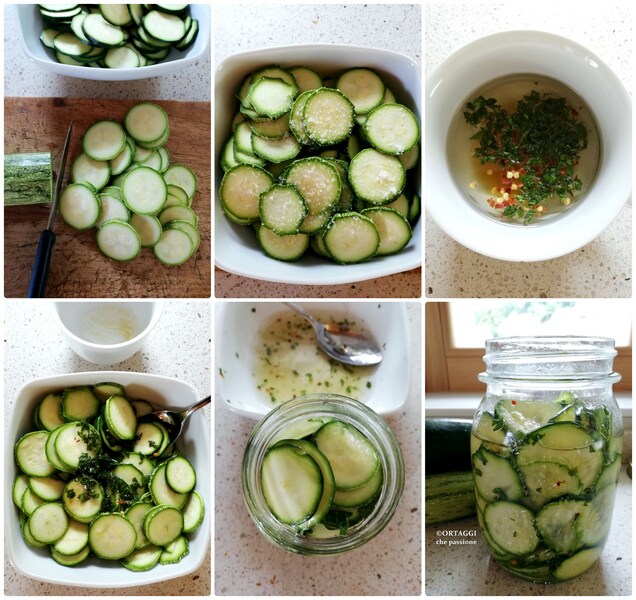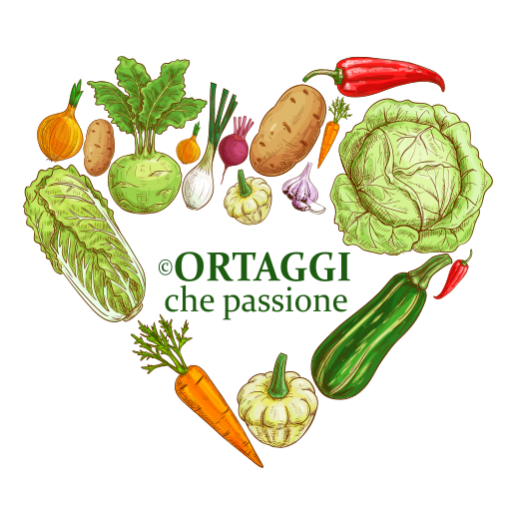Sweet and sour zucchini are a delicious preserve by grandma Benedetta that will amaze you with its perfect balance between sweet and sour. The zucchini, with their delicate flavor and irresistible crunchiness, are transformed into a burst of flavor thanks to the enveloping aroma of sweet and sour. This delicacy can be kept in the refrigerator for up to 5 days, allowing you to enjoy it at any time.
Homemade jarred zucchini are quick to prepare and versatile to use. You can enjoy them as an appetizer, a tasty side dish, a complement to main dishes, to dress cold pasta or rice salad, enrich a mixed salad, or add them to sandwiches, canapés, or sandwiches. With a few ingredients and a little patience, you can turn zucchini (preferably fresh and in season) into an irresistible delicacy to share with your family and friends.
Try the same recipe with carrot or onion slices (white or Tropea red). Or try preserving fried sweet and sour zucchini, you’ll feel the flavor. Alternatively, experiment with the Sicilian or Piedmontese version.
SEASON for #zucchini grown outdoors: from May to October.
My favorite RECIPES with zucchini:

- Difficulty: Easy
- Cost: Economical
- Rest time: 3 Hours
- Preparation time: 30 Minutes
- Portions: 1 jar of 2 cups
- Cooking methods: No cooking
- Cuisine: Vegan
- Seasonality: Spring, Summer and Autumn
- Energy 34.99 (Kcal)
- Carbohydrates 3.30 (g) of which sugars 0.20 (g)
- Proteins 2.61 (g)
- Fat 1.88 (g) of which saturated 0.23 (g)of which unsaturated 1.46 (g)
- Fibers 1.07 (g)
- Sodium 118.93 (mg)
Indicative values for a portion of 100 g processed in an automated way starting from the nutritional information available on the CREA* and FoodData Central** databases. It is not food and / or nutritional advice.
* CREATES Food and Nutrition Research Center: https://www.crea.gov.it/alimenti-e-nutrizione https://www.alimentinutrizione.it ** U.S. Department of Agriculture, Agricultural Research Service. FoodData Central, 2019. https://fdc.nal.usda.gov
Sweet and Sour Zucchini
- 2 zucchini (medium)
- 1/2 teaspoon fine salt
- 5 tablespoons sunflower seed oil (or extra virgin olive oil)
- 1/3 cup white wine vinegar (or apple cider, alternatively lemon juice)
- 2 tablespoons maple syrup (or agave syrup, or sugar)
- leaves basil (and mint)
- 1 pinch chili (crushed or powder – optional)
- 1 clove garlic (sliced or minced – optional)
- leaves parsley (or coriander – optional)
For a different flavor, also add 1 tablespoon of balsamic vinegar.
Tools
- 1 Jar 16 oz
- Knife smooth blade
Quick Sweet and Sour Zucchini
Remove the ends of the zucchini and wash them.
Slice the zucchini thinly with a mandolin or a smooth-bladed knife. Place them in a bowl, salt, mix, and let them rest for about 30 minutes. Meanwhile, prepare the marinade by mixing in a cup: oil, vinegar, and preferred aromas.
Then add the marinade to the zucchini and mix well.
Transfer everything into a 16 oz jar or an airtight container and store in the refrigerator for at least 3 hours before serving the sweet and sour zucchini.
How long do sweet and sour zucchini last?
Zucchini marinated this way can be stored in the refrigerator for a maximum of 5 days.
How to choose zucchini?
How to choose zucchini?
Here are tips for choosing fresh and high-quality zucchini:
General appearance – Opt for zucchini with smooth skin, free of bruises or signs of deterioration. Choose those with a firm and uniform texture throughout their length.
Size – Small or medium-sized zucchini tend to be more tender and flavorful compared to larger ones. Extra-large zucchini may have overly developed seeds and less sweet flesh.
Color – Fresh zucchini should have a bright green color without yellow or brown spots on the skin.
Weight – Choose zucchini that have a weight proportionate to their size. Heavier zucchini are often more mature and may have less tender flesh.
Flower end – Check the flower end (the side opposite the stem). It should be fresh and tender, not wilted or soft.
Stem – The end of the stem should be fresh and tender, without signs of dehydration or drying.
Consistency – Give a slight pressure with your thumb on the zucchini. It should be solid, without excessive yielding.
Choose in season – Prefer zucchini during their production season, usually in spring and summer, as they are fresher and more flavorful.
Origin – Opt for local and seasonal zucchini when possible, as they are often fresher and of better quality compared to imported ones.
Origin – Opt for local and seasonal zucchini when possible, as they are often fresher and of better quality compared to imported ones.
Curiosities
How can zucchini be preserved for winter?
There are two main methods for preserving zucchini: freezing or in oil.
FREEZING – How to put zucchini in the freezer?
Place the slices (or cubes) of zucchini on a tray lined with parchment paper (or a silicone sheet) so that they do not overlap and do not stick together. Place the tray in the freezer to freeze them separately. After a few hours, transfer the frozen slices to resealable food bags, removing as much air as possible to prevent frost and oxidation. Label the bags with the freezing date to track their freshness. Then place the bags in the freezer.
PRESERVATION IN OILHow long do raw zucchini last in the freezer?
Raw zucchini can be stored in the freezer for a period of 8 to 12 months, provided they have been properly prepared and frozen. Freezing zucchini helps preserve their flavor and freshness, allowing you to enjoy them even during the winter months or when they are not in season.
How long can zucchini stay in the fridge?
Raw zucchini can be stored in the refrigerator for about 4-5 days.
Place the zucchini (clean and dry) in the vegetable drawer of the refrigerator, where the temperature is usually more stable and cool. Or place them in an airtight container or a food bag, removing the air before sealing it.What vegetables can be frozen raw?
Vegetables that can be frozen raw are generally those with a sturdy cellular structure and a high water content. Freezing raw vegetables is a great way to preserve freshness and essential nutrients. Here are some vegetables that lend themselves well to freezing without pre-cooking: carrots, green beans, peas, peppers, zucchini.
Celery only if used later in soups or sauces.
Other vegetables like spinach, cauliflower, broccoli, and sweet corn require a quick blanching process (immersing in boiling water and then cooling with cold water and ice) before freezing to preserve their texture, color, and nutrients.
In general, leafy greens like lettuce, parsley, or basil do not freeze well, as they tend to become sticky and discolored after freezing. Also, raw potatoes are not ideal for freezing, as they can become mushy and watery once thawed.
Remember to freeze vegetables in portions suitable for your needs, using sealable food containers or bags, and label them with the freezing date to keep track. Freezing raw vegetables will allow you to have fresh and nutritious ingredients available throughout the year, making it easy to prepare healthy and tasty dishes.

